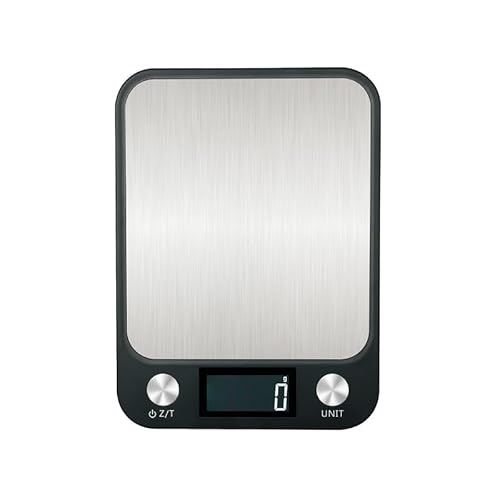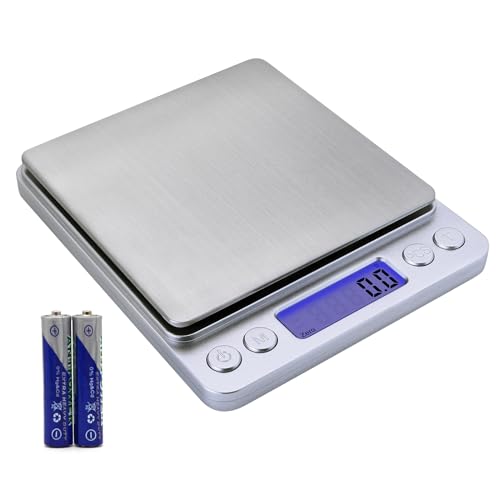LOL, and I do not mind Neem oil at all, in fact after it cures in soap I like the earthiness of it.  I also like Patchouli...
I also like Patchouli...
You are using an out of date browser. It may not display this or other websites correctly.
You should upgrade or use an alternative browser.
You should upgrade or use an alternative browser.
Dairy butter and odour
- Thread starter ResolvableOwl
- Start date

Help Support Soapmaking Forum:
This site may earn a commission from merchant affiliate
links, including eBay, Amazon, and others.
Actually a nice soap with 20% neem oil and fragranced with a strong lime FO smells pretty decent after it cures 6-8 weeks. Honest. The lime and neem blend together to make a citrusy black tea scent. Before it's fully cured, the odor isn't quite as appealing, but after cure ... not too bad. I use Nature's Garden cilantro lime, which smells to me as mostly lime and not so much cilantro.
violets2217
Well-Known Member
Sooo.... not to hijack this lovely thread but I have a question about neem oil. It was one of the first soaps I made and to be honest it kind of traumatized me. My family all have dry skin, issues with eczema & neem oil was touted to help with that. So I overlooked the smell... (wish I had seen this recommendation of Lime FO way back when, I love the smell of lime and cilantro!) and made a small batch. When I was testing a bar out... they were small round pringle can mold bars and thankfully didn't last long... I started spotting in the middle of my cycle. At first, with my age I thought it was per-menopause kicking in... but once I finished the bar and couldn't take the smell to try another bar it stopped and went back to my regularly scheduled cycle (actually if seemed to become more REGULAR...LOL). Then I internet searched neem oil a little more and and found were it was used as birth control in some instances and I wondered if the neem oil was the cause of my brief irregular spotting. Anyways.. the smell was my primary turn off and its been two years since, but I was wondering if anyone else had an opinion on my odd side effect of Neem oil.Actually a nice soap with 20% neem oil and fragranced with a strong lime FO smells pretty decent after it cures 6-8 weeks. Honest. The lime and neem blend together to make a citrusy black tea scent. Before it's fully cured, the odor isn't quite as appealing, but after cure ... not too bad. I use Nature's Garden cilantro lime, which smells to me as mostly lime and not so much cilantro.
I'm afraid I can't shed any light on that, @violets2217.
This is excellent to know! I made two very small batches of soap with neem oil during the summer and I can absolutely detect a specific quality to the soap. But I can still very much smell the oil—grassy and algaeic. I don’t mind it but I’m hesitant to make more if I can’t figure out a FO to mask it. I have lime FO that needs to be out to use.Actually a nice soap with 20% neem oil and fragranced with a strong lime FO smells pretty decent after it cures 6-8 weeks. Honest. The lime and neem blend together to make a citrusy black tea scent. Before it's fully cured, the odor isn't quite as appealing, but after cure ... not too bad. I use Nature's Garden cilantro lime, which smells to me as mostly lime and not so much cilantro.
This was a fascinating threat to read through, for various reasons.
As always with all things soapy, your mileage may vary. I'm happy with the neem and lime combo ... but you may feel differently about it. Be sure to scent the soap with a high dose of fragrance -- I think I used 5-6%. And don't be too surprised if the lime disappears for a few weeks during the cure, then reappears.

$18.85 ($0.24 / Ounce)
$28.95 ($0.36 / Ounce)
Primal Elements Clear Soap Base - Moisturizing Melt and Pour Glycerin Soap Base for Crafting and Soap Making, Vegan, Cruelty Free, Easy to Cut, Unscented - 5 Pound
Amazon.com

$69.97
$79.99
Illumive Deluxe Soap Making Kit - Large Soap Making Kit. Includes All Soap Making Supplies. DIY Soap Making Kit.
Novarbee

$35.74 ($0.32 / Ounce)
Nature's Oil Coconut 76 Degree, Naturally Refined, 7lbs (1 Gallon)
Bulk Apothecary

$18.89 ($1.18 / Ounce)
Extra Virgin Coconut Oil Cold Pressed Carrier Oil for Essential Oils Mixing & Soap Making Supplies
Soapeauty

$37.95 ($0.34 / Ounce)
COCONUT 76 Oil. Soap making supplies. 7 pound Gallon.
Traverse Bay Bath And Body

$24.06 ($0.30 / Ounce)
$32.00 ($0.40 / Ounce)
Primal Elements Triple Butter Soap Base (Mango, Shea, and Cocoa Butter) - Moisturizing Melt and Pour Glycerin Soap Base for Crafting and Soap Making, Vegan, Cruelty Free, Easy to Cut - 5 Pound
Amazon.com

$8.62
$17.99
The Natural Soap Making Book for Beginners: Do-It-Yourself Soaps Using All-Natural Herbs, Spices, and Essential Oils
Amazon.com

$13.22 ($0.41 / Ounce)
$14.97 ($0.47 / Ounce)
Golden Barrel Butter Flavored Coconut Oil (32 oz.)
JF Distributions

$7.95 ($0.57 / Fl Oz)
$11.94 ($0.85 / Fl Oz)
Nutiva Organic Coconut Oil with Butter Flavor from non-GMO, Steam Refined, Sustainably Farmed Coconuts, 14-ounce
iHerb LLC
I
Sounds like a fun experiment.
Interesting! I’m 48 so my cycle is aaaaallllll over the place anyway. But I do recall reading about it’s supposed fertility side effects while researching its use as an insecticide on plants (specifically roses, which is how I used it before discovering I could soap with it).Sooo.... not to hijack this lovely thread but I have a question about neem oil. It was one of the first soaps I made and to be honest it kind of traumatized me. My family all have dry skin, issues with eczema & neem oil was touted to help with that. So I overlooked the smell... (wish I had seen this recommendation of Lime FO way back when, I love the smell of lime and cilantro!) and made a small batch. When I was testing a bar out... they were small round pringle can mold bars and thankfully didn't last long... I started spotting in the middle of my cycle. At first, with my age I thought it was per-menopause kicking in... but once I finished the bar and couldn't take the smell to try another bar it stopped and went back to my regularly scheduled cycle (actually if seemed to become more REGULAR...LOL). Then I internet searched neem oil a little more and and found were it was used as birth control in some instances and I wondered if the neem oil was the cause of my brief irregular spotting. Anyways.. the smell was my primary turn off and its been two years since, but I was wondering if anyone else had an opinion on my odd side effect of Neem oil.
Sounds like a fun experiment.
Last edited:
Neem doesn't bother me much, either. Every now and then there is a short whiff of something unpleasant, but mostly it's just not that offensive.
Ladka
Well-Known Member
This leads me to consider making a soap with dairy butter and a negative superfat, say - 2%. Taking into account that NaOH is mostly 98% purity this should ensure that all butter is saponified, leaving no cheese-like or even worse odour.In response to the statement that "...a soap isn't supposed to consist of free fatty acids, but their (non-volatile, hence odourless) salts...", I'd like to make this comment --
The presence of this odor in my soap, combined with the comments from other people who have observed similar "butyric" odors in their soap means one of two things -- (1) Butyric soap does indeed have a characteristic "butyric" odor (I'm taking a hard pass on testing this hypothesis) or, what's more likely, (2) there is some residual free butyric acid in the soap after saponification is complete.
Given we usually make soap with some superfat and given that butyric acid has such a strong offensive odor with such a low detection limit, even trace amounts of butyric acid in soap are likely to create detectable odor, even if the butyric soap itself happens to be odorless.
KimW
Well-Known Member
Sounds like a worthwhile experiment for science! Please be sure to tell us all about it?!This leads me to consider making a soap with dairy butter and a negative superfat, say - 2%. Taking into account that NaOH is mostly 98% purity this should ensure that all butter is saponified, leaving no cheese-like or even worse odour.
ResolvableOwl
Notorious Lyear
Good point! Hot process even might allow you to hand in that missed superfat (not dairy butter of course) after cooking, without risk of remaining unsaponified butyrate esters.This leads me to consider making a soap with dairy butter and a negative superfat, say - 2%. Taking into account that NaOH is mostly 98% purity this should ensure that all butter is saponified, leaving no cheese-like or even worse odour.
Or (but that's becoming really experimental and advanced-math): fully cook a HP soap from the “problematic” oils (dairy butter, coconut/palm kernel/babaçu), with the part of the lye to get slightly negative superfat.
Then add citric and/or lactic acid. This will neutralise some of the fatty acids, so that the lighter acids (C4:0…C10:0 aka butyric/caproic/caprylic/capric) can escape (evaporate) from the HP batter. It will likely smell terrible, but every fatty acid molecule that offends your nose during soapmaking won't end in the soap itself!
After some boiling time, add the rest of the lye (with additional NaOH to convert lactic/citric acid into sodium lactate/citrate) and the other oils at slightly positive superfat for a second half of HP cooking.
I wonder if such a process is manageable without sophisticated measurement equipment (and reliable math to account for the lost acids). But it would reward with a soap as non-irritating (low in mid-chain fatty acids) as possible with household means.
In any case, I'm looking forward to your findings!
I'm interested in this topic, and will point out one fact that may be important: a triacylglycerol composed of at least one butyric acid is not the same as butyric acid, and neither is the same as sodium butyrate. The compound must evaporate (i.e. dissolve into the air) in sufficient concentration and then reach the olfactory plate at the top of your nose and then you can smell it. If any part of that chain is broken, there is not detectable odor (think about why we add very stinky compounds to natural gas: the gas is dangerous at concentrations lower than our noses could alert us to; think about carbon monoxide poisoning and it's the same issue). Butyric acid connected via glycerin molecule to 2 other, likely much longer chain fatty acids is barely volatile at all, whereas butyric acid and sodium butyrate are quire volatile. Unless we liberate the butyric acid from the TAG, very little if any will reach our olfactory plates, but once we saponify it it becomes VERY volatile and thus quite smelly.
I've started another thread on this, but this fact COULD provide a means of addressing the issue.
I've started another thread on this, but this fact COULD provide a means of addressing the issue.
Similar threads
- Replies
- 1
- Views
- 340
- Replies
- 9
- Views
- 2K
- Replies
- 7
- Views
- 5K
































